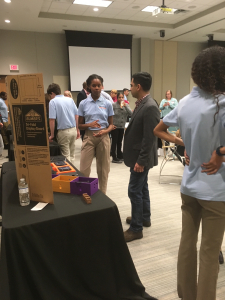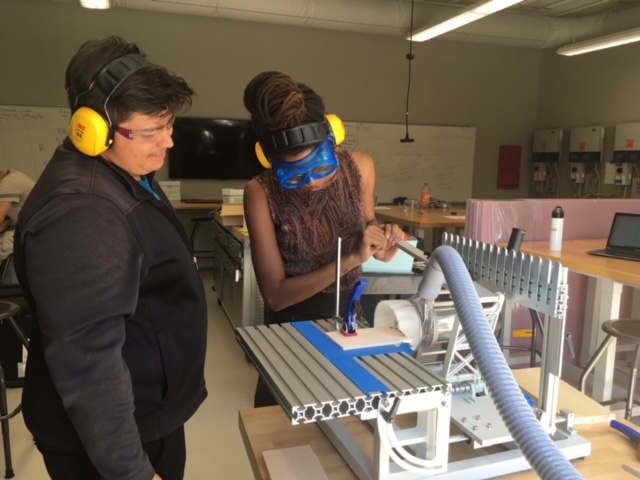Researchers and other stakeholders in higher education have worked toward equitable learning opportunities for all students for more than a decade. In 2019, Cheryl Strauss Einhorn, in Barrons, highlighted findings from McKinsey >amp; Company, the global consulting firm:
“Gender-diverse leadership teams were more likely to outperform on profitability (21%) and value creation (27%). Organizations in the top quartile for ethnic/cultural diversity were more likely to achieve above-average profitability — 33% more likely for diverse executive teams and 43%, for diverse boards.”
Another article, in Forbes, examined the benefits of a diverse workforce:
- A broader talent pool
- Better understanding of customers
- Increased productivity
- Happier employees
But it can be challenging to attract and retain diverse talent. Today’s global workforce demands a broader pipeline of candidates, those who demonstrate mastery in both technical and employability skills. Global skill development begins in your career and technical education (CTE) program.
How do you attract a more diverse set of students into your classes? How do you prepare them with both technical skills and the global mindset needed to succeed?
To build a more inclusive CTE classroom, you should:
- Begin to understand your own point of view; The Wisconsin Department of Instruction recommends taking a test to understand your own implicit bias.
- Get to know the students in your school and individualize your curriculum, incorporating cultural relevance into classroom projects.
- Recognize the value that diverse ideas and experiences can bring to your CTE classroom.
>nbsp;
Make explicit connections.
 Take Kirstin Bullington, Next Energy Engineering instructor, at Richland Two Institute of Innovation (R2i2) in Columbia, South Carolina. She loves the ways in which her students get to collaborate with others from different schools and neighborhoods. Her project-based curriculum focuses on equity-centered design thinking, so her students learn to appreciate how diversity of backgrounds, ideas and experiences lead to more robust engineering solutions.
Take Kirstin Bullington, Next Energy Engineering instructor, at Richland Two Institute of Innovation (R2i2) in Columbia, South Carolina. She loves the ways in which her students get to collaborate with others from different schools and neighborhoods. Her project-based curriculum focuses on equity-centered design thinking, so her students learn to appreciate how diversity of backgrounds, ideas and experiences lead to more robust engineering solutions.
Careers in science, technology, engineering and math (STEM) require interactions with diverse audiences. Bullington recruits students from all area high schools to ensure that competitive teams — such as Samsung Solve for Tomorrow and Lemelson-MIT InvenTeams — reflect the diversity of the district. Additional outreach programs to younger grades provide support to those students who are underrepresented in STEM, particularly girls and students of color.
Bullington encourages her engineering students to select issues that are important to them. Granting students the opportunity for self-directed learning will highlight their unique talents. Each year, students complete a solar project and are required to create instructional videos explaining their processes. Several students requested to make their videos in Spanish, in order to share them with family in their native countries. The bilingual videos helped the entire class learn more of the technical vocabulary.
Get to know your students.
Taking the characteristics of our students into account, as Bullington does, allows us to build stronger, more engaging lessons and projects. The Center for Global Education at Asia Society created a tool called, “Who Are My Students?” to help you think about the different kinds of diversity that exist within your classroom. It includes the questions:
- What languages do your students speak at home?
- What are your students’ greatest talents?
The tool can be used as an individual reflection activity or, alternatively, incorporated into annual student surveys (respecting privacy of course). Once you get to know your students, use their languages and backgrounds where and whenever possible and appropriate. If comfortable, you might also ask for their input on on incorporating diversity into projects.
Bullington uses the UN Sustainable Development Goals (SDGs) as a springboard for students to share their personal interests. The SDGs, 17 in total, were unanimously adopted by all UN member countries in 2015 — demonstrating a commitment to sustainability: addressing climate change, hunger and inequality. Asking students to identify one of these goals, and asking why, offers a great opportunity to explore how different communities address similar issues. Bullington learns more about her students and what is most important to them, while also helping them make connections with their colleagues from different backgrounds. Most importantly, this approach gives students a voice.
Engage in project-based learning with a global focus.
Globally focused, project-based learning creates a culture of collaboration that draws students together as a team to tackle complex and engaging problems while they learn to recognize and respect different opinions and ideas. As you begin to consider global projects, create a before and after survey to highlight valuable shifts in attitude.
Build student choice into your projects up front. Allow students to choose project topics, including topics related to key features of their cultures. When comparing information with countries abroad, give students the choice to focus on countries that reflect their ancestry. But students should not feel pressure to do so. Remind them that they speak for themselves and not their whole culture, race, religion or ethnic group.
Learn through virtual exchange.
Virtual collaboration with schools in other countries exposes students to diversity and provides a path to authentic global career readiness. When students connect and collaborate with others in an international community, learning opportunities grow exponentially.
In 2018, R2i2 started a virtual exchange with ITT Fedi Fermi School in Pistoia, Italy, organized through The U.S. Department of State’s Bureau of Educational and Cultural Affairs (ECA). The robotics team at Fedi Fermi wanted to build a robotic citizen science telescope (Project PANOPTES) to search for exoplanets, and they sought to collaborate and share the experience with an American school. ECA organized Zoom meetings every few months and connected both schools with lead project scientists, including data scientists at Google and a NASA physicist. Students shared successes and setbacks. And despite differing progression in the project, each school gained invaluable experience in communicating results to diverse audiences.
Resources
Asia Society’s Global CTE Toolkit provides many, free CTE-focused resources to help you expose students to diversity and global cultures.
- Sample projects, tied to global issues, are available for every CTE pathway — fully modifiable and flexible to meet your needs.
- The Diversity section assists educators in creating a culturally responsive classroom that is respectful of diversity and inclusive of all perspectives and backgrounds. A new Global Social Justice Framework will help you think about equity across your CTE program. This is also where you can find the “Who Are My Students?” tool.
- The Technology Tools for Global Education section can assist in finding ways to connect with schools abroad.
In partnership with ACTE, The Center for Global Education at Asia Society has created online professional development modules that support CTE educators to teach career readiness skills using active, project-based learning integrated with global content. Modules on respect for diversity in the classroom and connections to classrooms in other countries can help you integrate the suggestions above into your CTE program. The modules can be accessed for free.
Asia Society’s new initiative, Education for Equity, wants all students to understand and act on racism. Resources include lesson plans, activities, a discussion series, and curated reading lists for teachers, parents and youth.
Kirstin Bullington is Next Energy Engineering instructor at Richland Two Institute of Innovation in Columbia, South Carolina. Email her.
Jennifer Manise is executive director of the Longview Foundation. Email her.
Heather Singmaster is director of CTE in the Center for Global Education at Asia Society. Email her.






